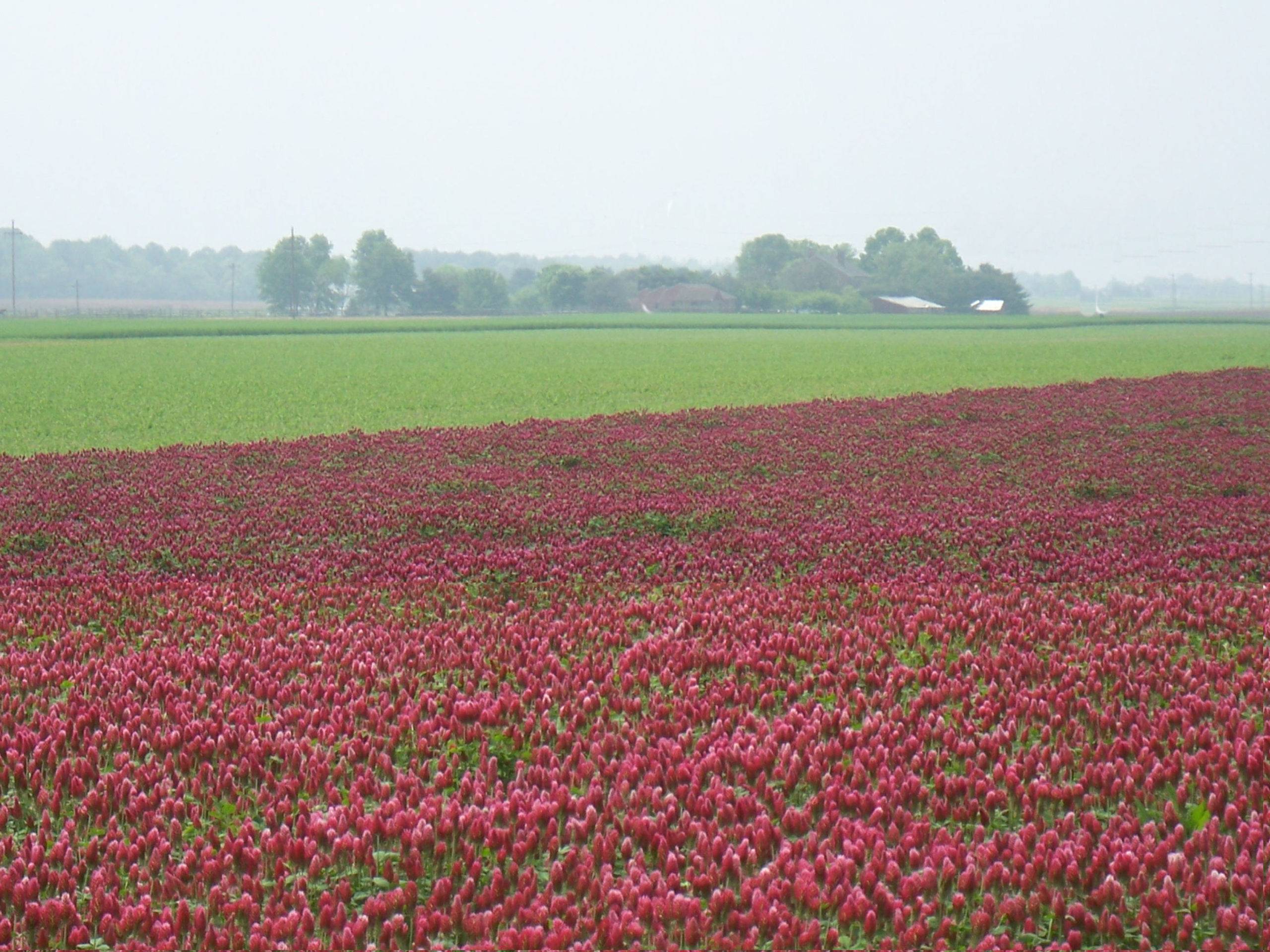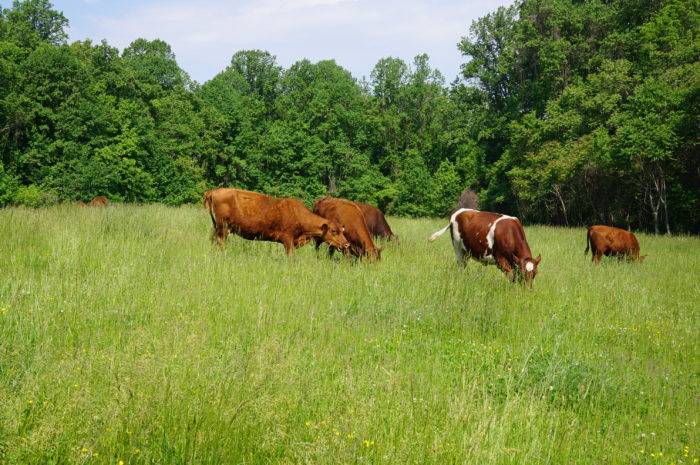
Editor’s Note: This post is part of a multi-part blog series. Our first post in this series explored initial themes from the Census, while this post offers a deeper dive into conservation practices. Our next post in the series will explore what the Census shows us about local and regional food systems.
In early 2024, the US Department of Agriculture (USDA) released the results of the 2022 Census of Agriculture. Conducted every five years, the Census of Agriculture is sent to every known agricultural producer in the country to ask important questions about their farms and how they manage them. The data provided by the Census of Agriculture is an essential and comprehensive tool for all stakeholders to understand what is happening in US agriculture and food.
A Mixed But Positive Picture
The 2022 Agricultural Census paints a mixed but generally positive picture of conservation. Notably, even when examining specific measures such as conservation practices, the national trend of farm loss and farm consolidation continues to shape the overall context.
For example, the Census shows increasing use of key practices like conservation tillage and cover crops and durable protection of acres in conservation easements. Meanwhile, there are fewer but larger pasture and grazing operations, reflecting broader national trends.
These findings highlight the importance of programs such as the Environmental Quality Incentives Program (EQIP) and Conservation Stewardship Program (CSP) to support conservation efforts and the potential for increased impact if these programs were expanded and given a more long-term scope.
More Acreage Protected With Cover Crops
Cover crops are planted to protect the soil and provide nutrients, rather than planted for harvest. Cover crops are a valuable conservation practice that prevents soil erosion and improves soil health while providing additional benefits such as weed suppression, pest control, and improved biodiversity.
A positive finding is that there were an additional 2.6 million acres with cover crops (a 17% increase) in 2022 than in 2017 and a 50% increase in acres with cover crops from 2012. Additionally, it is significant that the number of farms reporting use of cover crops is steady from 2017 and a 15% increase from 2012, despite the overall decline in the number of farms during this time period.
This growth in cover crop usage is very encouraging as cover crops provide a wide range of soil health and ecosystem benefits. This growth speaks to the likely impact of cover crop support in major USDA conservation programs. For instance, in fiscal year (FY) 2022 there were more than 3.13 million acres that received payments for the Cover Crop conservation practice from the Natural Resources Conservation Service (NRCS) and it was the conservation practice with the highest practice count nationwide.
Fewer But Larger Pasture and Grazing Operations
Pasture and grazing land serves as an important part of the national conservation picture. Pasture and grazing lands provide stable carbon storage, improved soil quality and water quality, and wildlife habitat.
Unfortunately, there were approximately 1 million fewer acres in pasture and grazing land that could have been used for crops without additional improvements than 2017 (a 6% decrease), just barely (1%) above 2012 acres. The 8% increase in acres of pasture and grazing land that could have been used for crops between 2012 and 2017 was the first increase in 20 years. Since the 1997 high of 66.4 million acres, the amount of cropland used for pasture has steadily declined.
This is largely because of an overall decline in the number of farms during this time period. Nationally, the total number of farms declined by 7% between 2017 and 2022. However, the number of farms reporting pasture and grazing land that could have been used for crops only declined by 6%. Those farms that reported pasture and grazing land in 2022 were, on average, 11% larger in 2022 than in 2012. This data indicates that producers continue to see value in pasture and grazing lands for their operations but as the trend of fewer, larger farms continues, the agricultural landscape loses pastureland and the attendant environmental and climate benefits it generates.

Nearly 8 million fewer acres of permanent pasture and rangeland were reported in 2022 than in 2017 (a 2% decrease). For the past twenty years, the number of acres in permanent pasture and rangeland has hovered at approximately 400 million, with 393 million in 2022 the lowest it has dipped since 1997.
Again, this is largely driven by an overall shift towards fewer but larger farms during this time period. Those farms that report having permanent pasture and rangeland were 14% larger in 2022 than in 2017.
Rotational grazing is an approach to livestock management that involves rotating livestock through sections of pasture in a planned sequence. Rotational grazing can improve pasture soil health, reduce erosion, improve forage quality, and improve water management as it improves climate resilience.
While there was a 10% decline in the number of farms (nearly 27,000 fewer) that report practicing rotational or management-intensive grazing in 2022 from 2017, the proportion of all farms in the US that report rotational or management-intensive grazing was unchanged, representing 13% of all farms in the US. Again, this decline largely reflects the total farm loss during this time period.
Steady Acreage Permanently Protected for Conservation
Conservation easements are voluntary permanent agreements that limit some land uses in order to protect the conservation value of the land. Landowners generally sell or donate some of the rights of their land to a public or private trust, creating a permanent easement on the property that prevents some land uses such as subdivision or development. The conservation easement transfers with any future sale or inheritance of the land, ensuring long-term protection of conservation priorities.
Because of the generally permanent nature of conservation easements, the base acreage enrolled in easements should only increase or maintain steady between Census periods. As expected, the number of acres reported as being under conservation easement is virtually identical in 2022, 2017, and 2012 at just over 13 million acres. This includes over 5.6 million acres of USDA NRCS supported conservation easements, 81% of which are permanent easements.
More Soil Protected With Conservation Tillage
Conservation tillage and no-till methods protect soil health and reduce soil erosion, increase crop resilience, reduce the need for chemical fertilizers and pesticides, and save labor costs. Using conservation tillage involves covering at least 30% of soil surface with crop residue and/or straw following planting. No-till farming leaves the soil surface undisturbed by tillage and crop residue is left on the soil surface.
In encouraging news, an additional 756,176 acres (an 8% increase) were managed with no-till methods in 2022 than in 2017 and 21,584 additional farms (a 7% increase) reported using no-till methods. The acreage and number of farms using no-till methods were virtually identical to 2012.
Unfortunately, 692,675 fewer acres were managed with conservation tillage in 2022 than 2017, although 11,152 additional farms report using conservation tillage. The acreage and number of farms using conservation tillage both increased from 2012, a 28% increase in acreage and an 11% increase in number of farms.
These findings suggest that conservation and no-till methods continue to be a significant conservation practice for American farmers, but the fluctuation and lack of strong growth in the practice of no-till and conservation tillage also highlights the challenges of short-term conservation programs such as EQIP. Between 2017 and 2022, EQIP and CSP contracts included 3 million acres of the no till conservation practice and 2.2 million acres of the reduced tillage conservation practice, but those contracts are for a maximum of three years for EQIP, with the majority being only for one year, and five years for CSP. Long-term conservation contracts would support the sustained practice of conservation and no-till methods.
Declining Acreage in Conservation Reserve Programs Followed by Recovery
Conservation reserve programs are voluntary programs funded by USDA that provide vital income for producers while helping to restore and protect ecosystems that are essential for biodiversity, water quality, preventing soil erosion, and increasing carbon sequestration by removing environmentally sensitive land from agricultural production. These programs include the Conservation Reserve, Wetlands Reserve Enhancement Partnership, Farmable Wetlands, and Conservation Reserve Enhancement Programs, all of which pay farmers an annual rental payment in exchange for ecologically vulnerable land that is removed from agricultural production.
The Census shows that between the 2017 and 2022 Census, the US lost approximately 1.8 million acres of land (a decline of 8%) enrolled in Conservation Reserve, Wetlands Reserve, Farmable Wetlands, or Conservation Reserve Enhancement Programs and a 23% decrease from 2012. However, the number of acres enrolled in Conservation Reserve programs is actually an underestimate, as the FSA reports approximately 22 million acres enrolled in Conservation Reserve Programs in 2022. This underestimate is likely the result of measurement error from the Census’ reliance on self-reported participation rather than FSA administrative data.
In encouraging news, despite the decline in Conservation Reserve Program acreage from 2012, recent FSA data from 2023 and 2024 shows a 14% increase in acreage to 25 million acres. Total CRP enrollment is rapidly approaching the national acreage cap of 27 million acres (in 2024), reflecting the growth in enrollment of grasslands acres in recent years. It also likely reflects the impact of decreasing the required Environmental Benefits Index (EBI) to enroll in CRP, a move that made it easier to enroll acres with a lower conservation benefit. Recent directives from FSA also indicate that they closed the CRP Continuous Enrollment for 2025 on July 31, 2024 because they expect to have reached the acreage cap.
Overall Favorable with Some Mixed Outcomes
Overall, the 2022 Census of Agriculture paints an optimistic view of agricultural conservation but highlights the need for continued growth in these key areas. While the use of key conservation practices has increased, they are still practiced on a minority of American farms and there is a continued need for investment in voluntary conservation programs such as the Conservation Stewardship Program to support the transition to sustainable management. NSAC and its members will continue to advocate for policies that support these essential foundations of a sustainable food system.
For more on the 2022 Census of Agriculture stay tuned to the NSAC blog, and check out the following resources:
2022 Census of Agriculture Report
The post Promising Conservation Results in the 2022 Agricultural Census appeared first on National Sustainable Agriculture Coalition.